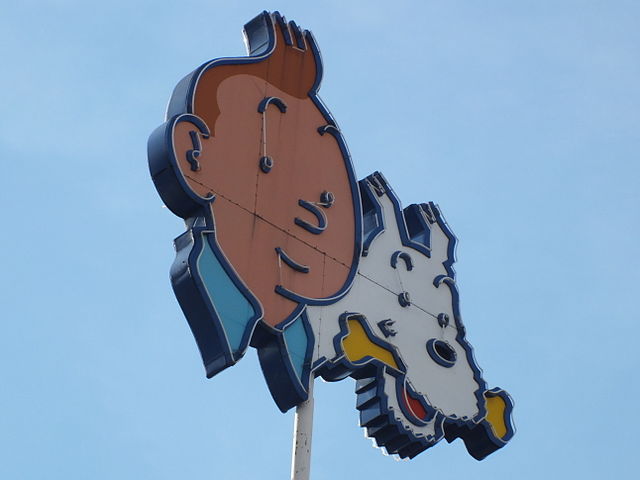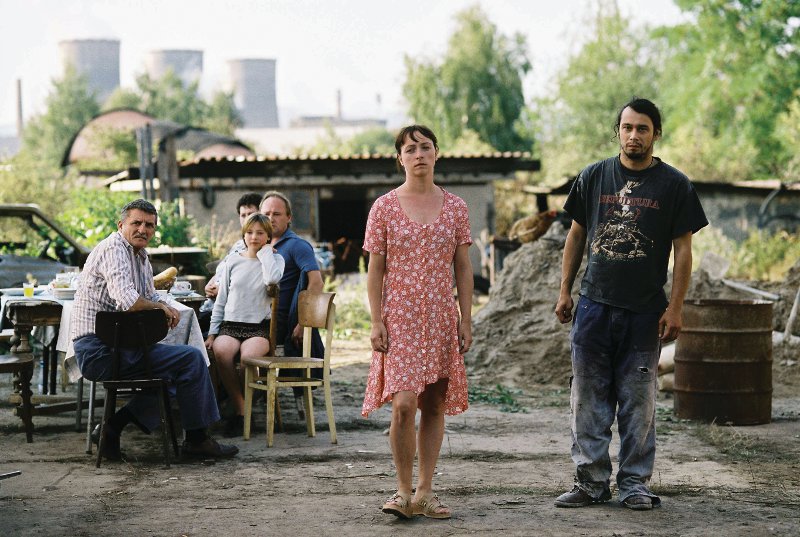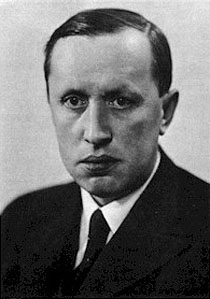Comics, often underestimated in Anglo-American culture, is certainly not seen as a “low” art in most of Europe. It has significantly strong role in the culture of francophone countries. One of the most known comics character is Tintin – the young reporter of Le Petit Vingtième. Although comics about Tintin are not too sophisticated on the graphic side and the plot usually aims for children and teenagers, one can actually find much deeper meanings in it, especially when using some sociological and psychoanalytic approach, such as Lacan’s or of the Michel de Certeau.

De Certau’s works on everyday practices provides useful tool for analysing culture and consumption. According to his work “The Practice of Everyday Life” (“L’invention du quotidien”) he states, that consumption is in fact also a form of production, but different “because it does not manifest itself through its own products, but rather through its ways of using the products imposed by a dominant economic order”1.
What new contents of the “Tintin au Congo” can be uncovered by looking at it with de Certeau eyes? Firstly, we can tell more about the Tintin character himself. He’s going to Africa as reporter, but he’s not a passive observator. He uses it in many ways to suit his needs and in his everyday life he finds that obvious that locals serve him, are obedient to him or simply admire him2. Tintin seems to have no difficulties with everyday activities – unlike the black people, who cannot even speak the “proper” language.
Situation of the Congo’ native people seems to be similar to the situation of Indians under Spanish colonisers: they have no choice but to accept3 the system forced on them by the Belgian state. Having to fit into the European customs and use the French language put them at the place of the consumers. They are at the bottom end of the of the system and they are struggling with everyday activities – for instance African characters have very poor language skills, even the monkeys speak better French than them. Yet they find some way to express themselves, some bit of little-freedom – it’s mostly significant in the way they wear European clothes. Although many of black characters in the comics wear some elements of the “civilised world” wardrobe, they wear it in very different way from what it’s creator’s had in mind. That can be observed in many places in the comics, one of the most significant scenes is the one when train crashes into Tintin’s car4. We can see there a black gentlemen wearing tie and collar on the naked torso, another gentlemen wearing uniform jacket and knee-high boots but no trousers and a lady who is walking barefoot but have expensive fur-coat.
But also the Tintin book itself can be received in many ways. The reader of its era who was, in Hergé’s words, “fed the prejudices of the bourgeois society that surrounded him5”, will read the book different than contemporary man, who will not accept the colonial and racist significance of Tintin’s African adventures. Tintin as a product did not also escaped re-creation by the consumers and is used in different way from his author’s ideas: a good example of such is “The Adventures of TinTin: Breaking Free”, an unofficial Tintin fan-comics where Tintin is a member of English working class during hard times of Margaret Tatcher and he’s involved anti capitalistic movement which leads to the outburst of the revolution… 6
Lacan’s works on mirror stage, although describing only a certain stage in toddler’s life, can also be applied in general to the human being – some part of us stays childish to the end of life, and as we can’t really see an objective picture of us, we have to rely on our images around us. What can be revelled when Lacan’s approach will be used to look at this comic book?
Tintin’s own mirror gets broken at the very beginning of the story when Milou (or Snowy, in English version), Tintin’s dog, checks the contains of one of the travel trunks7. But Tintin seems to do not need it – he is self-confident, he has very big opinion on himself and this picture of himself is well supported by the way everyone treats him. He is widely admired all around the world (foreign editors offer him a high payments to have him working for them)8 as well as in Congo itself (he is even worshipped by local tribes)9. He takes it for granted.
Tintin becomes an idol for most of black people in the comics. They replace ideal picture of them with his image. “If you not good, you never be like Tintin” – says the mother to the small African child10, as “being like Tintin” was the only aim worth achieving in small one’s life. But a comics can be also a mirror for a reader. By identifying with the character, which can be embodiment of one’s ideal ego, one can feel better. Tintin is created in a way allowing a young reader to identify easily – he is of no specified age, although he looks young, he seems to have well-established work career and he leaves on his own, which implicates that he’s an adult has no distinguishing features. Tintin do not even have a mouth – it leaves a lot to be filled by the parts of reader’s own image. This is the phenomenon described by Lacan – replacing own ideal ego by the idol with which the one wants to identify him (or her)self11.
But this image shown in the comics can be not only a mirror image of the single human being, but it can also tell us a lot about the whole society. “Tintin au Congo”, issued nearly 80 years ago is a captured image of the society of these times. Comics of the present day give us an image of today’s world. Comparision of 1930’s Tintin and comics from the turn of the last century, for instance a Wake (Sillage) series, shows how the views of our society changed over these years. In the first issue, “Fire and Ash” (“À feu et à cendres”)12 Nävis, main character of the series, just like Tintin, suddenly finds herself in the new environment. She also has some unique capacities and can be useful for a society of the colonisators. But that where similarities ends. Tintin was a representative of the “civilised” world, who finds himself surrounded by the primitive African beings while Nävis, who lives an idyllic Tarzan-like life on her jungle planet is discovered by extremely advanced civilisation travelling around the Galaxy in the vast convoy of spaceships. The civilisation of Wake are also colonisers, but, unlike Tintin and Belgium of his time, their laws respect rights of native inhabitants of the passed planets and do not impose any changes without their consent or if the changes will not be profitable for them13. Being detrimental to another intelligent civilisation is severely punished14. Nävis also differ from Tintin, as she is admired by the other races for her “strong empathy towards subordinate forms of life”15 while Tintin treats Africans almost like items. This shows a huge change in the XX century thinking: from white people being superior beings and centre of the world to humanity as a tiny part of enormous universe.
Nothing stands in the way in applying both Lacan’s and de Certeau’s systems at once. If comics is a mirror, the reader can use product of this mirror, the image, in some specific way – it can be manipulated. For instance one can treat “Tintin au Congo” as a negative: instead of identifying with the character, one can build his image of himself on the contrast with TinTin: “How good that I am not such racist like a Tintin” etc. The reader can also indentify himself with picture of the perfect-me builded upon the comic character16 to such extend that he will change his everyday behaviour to be more like his idol.
In my opinion both Lacan’s and de Certeau’s views can provide us with useful tools for analysing the material. By using these methods we can gain much more information than author intentionaly included in his work, but also we can learn a lot about ourselves.
1De Certeau, Michel: “The Practice of Everyday Life”, Berkeley: University of California Press. (p. xiii)
2Hergé: “The adventures of Tintin, reporter of Le Petit Vingtième in the Congo” Brussels, Casterman, Brussels, 1962
3De Certeau, p. xiii
4Hergé, pp. 34 and next
5Sadoul, Numa: trans. Michel Didier from French, copyed. Kim Thompson (February 2003). “Interview – Hergé: Extracts from Entretiens avec Hergé“. The Comics Journal 1 (250): 180–205.
6http://tintinrevolution.free.fr/
7Hergé, p.6
8Hergé p. 19
9Hergé, pp 54 and 112
10Hergé, p.
11http://neoconsrevolt.blox.pl/2008/12/Lacanowska-faza-lustra.html
12Morvan, Jean-David, Buchet, Philippe, trans. Maria Mosiewicz “Armada 1 – Ogień i popiół” (“À feu et à cendres”), Egmont 2002
13Morvan, Jean-David, Buchet, Philippe, trans. Maria Mosiewicz “Armada 3- W trybach rewolucji” (“Engrenages”) Egmont 2001
14Morvan, Buchet, “Ogień i popiół” p. 41
15Morvan, Buchet, “ Ogień i popiół” p. 43
16http://neoconsrevolt.blox.pl/2008/12/Lacanowska-faza-lustra.html
Photo source: http://en.wikipedia.org/wiki/File:Tintin_and_Snowy_on_the_roof.jpg





